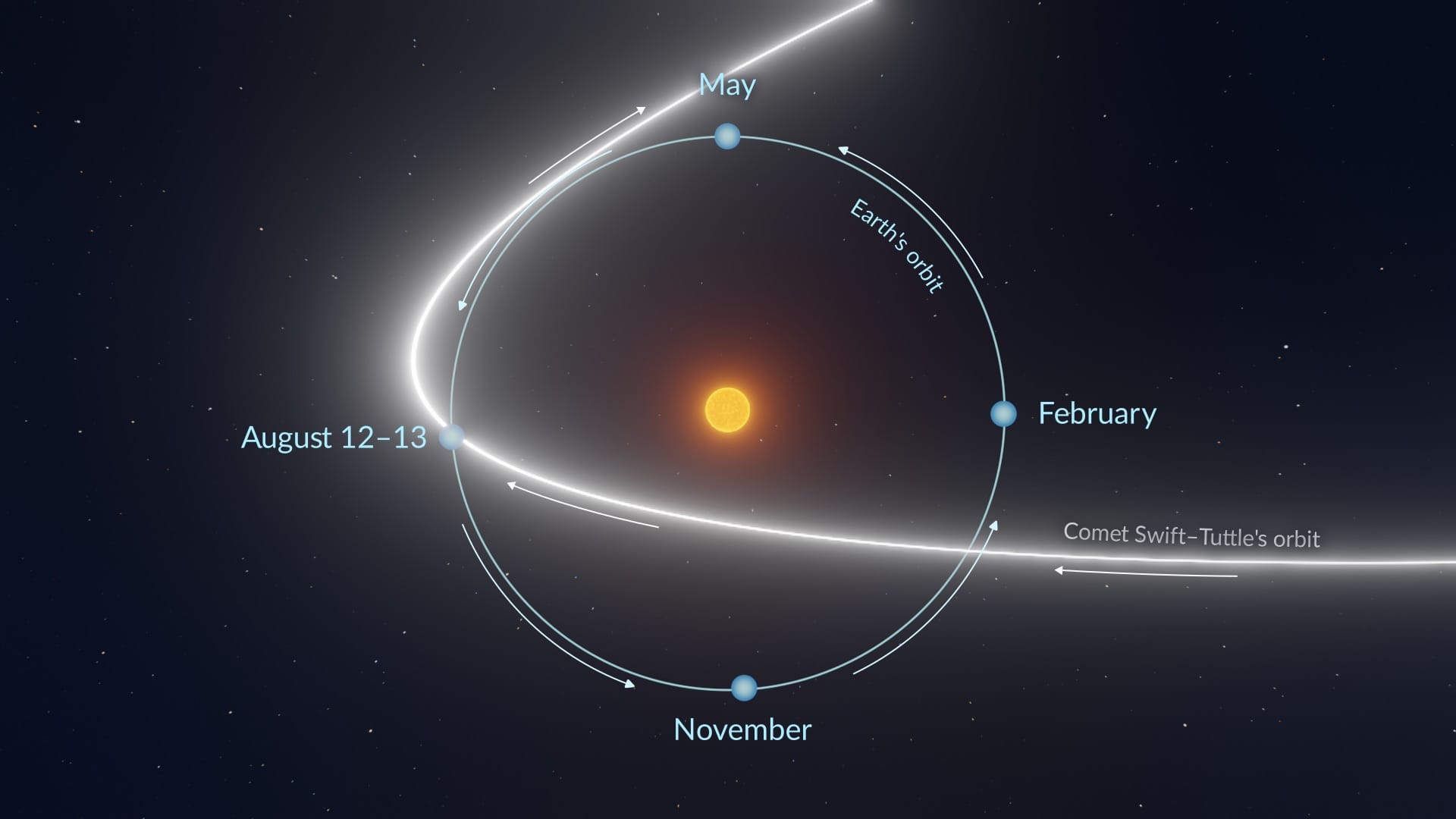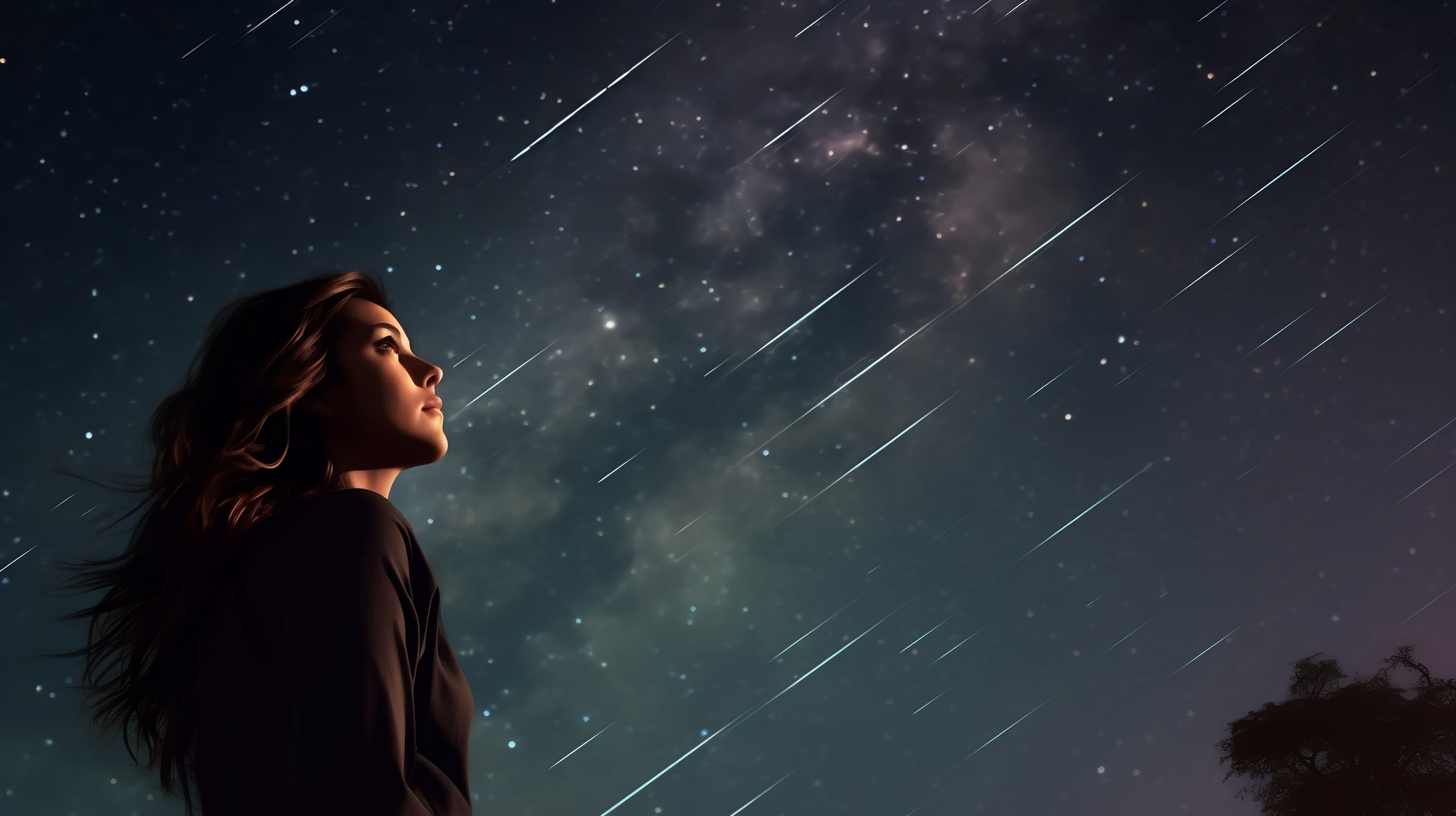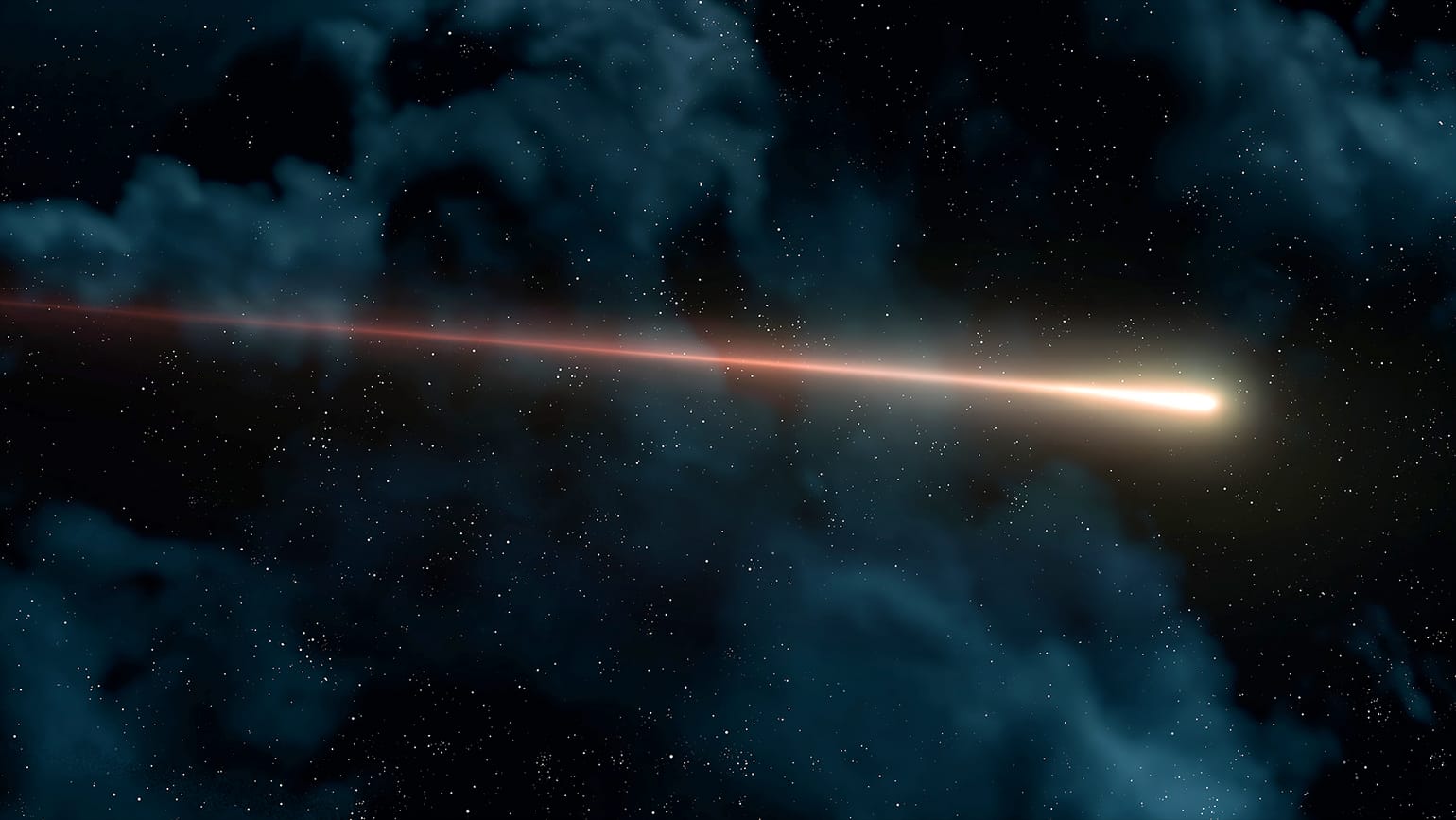Meteor Showers Explained: What Causes Shooting Stars?
Every night, countless meteors burn up in Earth’s atmosphere, but only a few times a year do we witness a real meteor shower. These celestial events are both beautiful and scientifically valuable. In this article, we’ll explore what meteor showers are, how they form, and how you can observe them under the best conditions. Follow every meteor shower with ease using the free Sky Tonight app — just type its name and see where and when to look in your sky.
Contents
- What are meteor showers?
- How do meteor showers form?
- What color are shooting stars?
- Why are meteor showers important?
- Annual meteor shower calendar
- Best conditions for observing meteor showers
- Meteor showers: F.A.Q.
- Fun facts about meteor showers
- Why do meteor showers happen: Conclusion
What are meteor showers?
A meteor shower occurs when our planet passes through a stream of debris left behind by a comet or, less often, an asteroid. These particles, typically ranging in size from a grain of sand to a pea, burn up in the upper atmosphere at altitudes of about 80–120 km, creating bright streaks of light often called “shooting stars.” During the peak nights of a shower, dozens of meteors per hour may be visible, all appearing to radiate from the same point in the sky, known as the radiant.

How do meteor showers form?
As a comet approaches the Sun, heat causes its icy surface to sublimate, releasing dust and gas. This material spreads along the comet’s orbit, creating a stream of particles. When Earth intersects this stream, the fragments plunge into the atmosphere, producing a meteor shower.
Because all the particles in a stream move in nearly the same direction, meteors appear to streak outward from a single spot in the sky — the radiant. The showers are typically named after the constellation where their radiant lies — like the Perseids, which appear to come from Perseus, or the Geminids from Gemini. An exception is the Quadrantids: their radiant lies in Boötes, but their name comes from the now-obsolete constellation Quadrans Muralis.
Curious about other forgotten constellations? Take our quiz and see if you can tell which old star patterns — from cats to electric generators — are still officially recognized today.

Most showers repeat every year when Earth returns to the same place in its orbit, but their intensity can vary depending on how dense the debris stream is at that point. Some streams are centuries old and widely dispersed, while others are relatively young and produce stronger displays.
What color are shooting stars?
Not all meteors look the same. While many appear white, others can display vivid colors that depend on their chemical makeup. Each element glows in a specific way when it vaporizes in the atmosphere — a cosmic chemistry show you can see with the naked eye.
- Sodium produces bright yellow or orange streaks.
- Magnesium and copper can create green flashes.
- Calcium sometimes adds violet hues.
- Iron gives a warm golden tint.
Most meteors are faint and vanish too quickly for clear colors, but bright fireballs often reveal striking shades for a few unforgettable seconds.
Why are meteor showers important?
Beyond their beauty, meteor showers serve as natural laboratories. As countless particles burn up in the atmosphere, they release trace metals such as sodium and iron that form thin layers high above Earth. With specialized radars and lasers, scientists can track these layers to study winds and waves in the upper atmosphere. Meteor showers also allow researchers to estimate the amount of cosmic dust near our planet, which is essential for assessing risks to satellites and spacecraft.
Annual meteor shower calendar
Every year, Earth crosses several well-known streams of cometary or asteroidal debris, producing reliable meteor showers. Their activity periods, peak nights, and intensities vary, but each has a characteristic radiant (apparent origin point in the sky) and a known parent body. The ZHR (zenithal hourly rate) indicates the maximum number of meteors per hour visible under ideal dark-sky conditions when the radiant is overhead. In practice, the observed number is usually lower, and visibility also depends on whether the shower favors the Northern or Southern Hemisphere.

Sky Tonight makes it easy to plan your next meteor shower watch. Use the search tool to find any shower by name, locate its radiant in the sky, and check when it will reach its peak. You can even set reminders so you never miss the best viewing nights. Explore the built-in astronomical calendar to see all upcoming meteor showers, along with their activity periods and peak dates — everything you need for a perfect meteor hunt.
Best conditions for observing meteor showers
How well a meteor shower can be seen depends mainly on three things:
-
Moonlight: A dark sky is crucial, so showers are best observed near the New Moon or when the Moon has set. Bright moonlight can wash out fainter meteors.
-
Time of night: After midnight is usually the best time to watch — that’s when the part of Earth facing forward in its orbit meets more incoming particles.
-
Sky quality: The farther you are from city lights, the more meteors you’ll see. Under truly dark, rural skies, the difference can be dramatic compared to urban areas.
Check out our dedicated article to get more helpful tips on watching meteor showers.
Meteor showers: F.A.Q.
What is a shooting star?
A shooting star isn’t really a star at all. It’s another name for a meteor — a tiny piece of space debris burning up as it enters Earth’s atmosphere and producing a bright streak of light in the sky.
Is a meteor shower dangerous?
Not at all. Almost all space rocks that cause meteor showers burn up completely dozens of kilometers above the ground. Only in extremely rare cases do larger fragments survive and fall to Earth as meteorites — and they’re very unlikely to cause any harm. Curious about the chances of a space rock actually hitting Earth? Read our article about potentially hazardous asteroids.
How rare is a shooting star?
Shooting stars are more common than you might think! On an average clear night, you can usually see a few per hour. During major meteor showers like the Perseids or Geminids, dozens — or even hundreds — can appear every hour.
What does it mean when you see a green shooting star?
If you spot a green meteor, it’s probably a space rock rich in magnesium or copper. As it burns up, those metals give off a green glow — pure chemistry, not magic.
How big are shooting stars?
Most space rocks that produce meteors are surprisingly small — often just millimeters across. Even bright fireballs rarely exceed the size of a walnut. Their brilliance comes from their high speed, not their size.
Want to test your meteor-watching knowledge? Try this quiz on how to catch a shooting star!

Fun facts about meteor showers
-
The fastest meteors, like those from the Leonids, can hit the atmosphere at up to 71 km/s (44 mi/s — more than 200 times faster than a rifle bullet).
-
Not all showers come from comets: the Geminids originate from the asteroid 3200 Phaethon, making them unique among major showers.
-
During rare meteor storms, like the spectacular Leonid outburst of 1833, observers reported seeing tens of thousands of meteors per hour, making the sky look like it was raining fire.
-
The bright streak of a meteor is caused by the superheated air glowing around the particle, not the particle itself burning like a spark.
-
Even the tiniest dust grains can produce visible meteors. A particle the size of a grain of sand is enough to create a bright flash.
-
Many ancient cultures recorded showers in myths and chronicles, using them as omens or calendar markers.
Want to visualize everything you’ve learned about shooting stars? Check out this infographic that explains how meteor showers form, when to see them, and even how to capture them on camera.

Why do meteor showers happen: Conclusion
Meteor showers occur when Earth passes through trails of debris left behind by comets or asteroids. These fragments enter the atmosphere at high speed and create the bright streaks we call shooting stars. Their colors reveal their chemical makeup, and their recurring appearances help scientists study both the upper atmosphere and the structure of the Solar System.
To observe meteor showers at their best, choose dark, moonless skies and watch after midnight. With Sky Tonight, you can check upcoming shower dates, find the radiant’s position, and plan your viewing for the most active nights.
